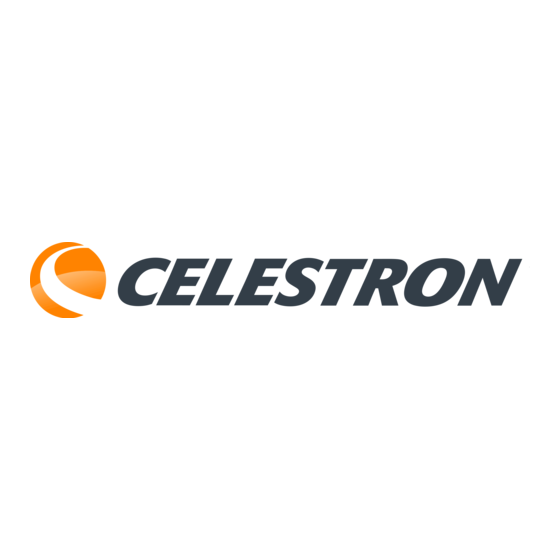Celestron Onyx 80EDF Kullanıcı El Kitabı - Sayfa 2
Teleskop Celestron Onyx 80EDF için çevrimiçi göz atın veya pdf Kullanıcı El Kitabı indirin. Celestron Onyx 80EDF 9 sayfaları. Celestron onyx80edf spotting scopes: owner manual

1. When working with any optical instrument, there are several focusing hints that will ensure that
you get the sharpest possible image. The hints listed here are for visual observing and
photography.
2. Never look through glass. Glass found in household windows is optically imperfect and may vary
in thickness from one location to the next. This inconsistency can and will affect the ability to
focus your telescope. In most cases, you will not be able to achieve a truly sharp focus. In some
cases, you may actually see a double image.
3. Avoid looking across or over objects that are producing heat waves. This includes asphalt
parking lots on hot summer days or building rooftops. The turbulent air caused by these
conditions makes it impossible to get a truly sharp focus.
4. Avoid hazy skies, fog, and mist, all of which can make it difficult to focus, thus greatly reducing
the amount of detail seen. Remember that no matter how good the optics of your instrument are,
they can NOT perform to their fullest under adverse conditions.
Calculating Magnification (Power)
You can change the magnification of your scope simply by changing the eyepiece (also called an ocular).
To determine the magnification with your telescope, simply divide the focal length of your telescope by the
focal length of the eyepiece. In equation format, the formula looks like this:
Focal Length of Telescope (mm)
Magnification = ___________________________________________________
Focal Length of Eyepiece (mm)
For example, to determine the magnification of the 80EDF with a 25mm eyepiece, divide the focal length
of the telescope (500mm) by the focal length of the eyepiece (20mm). 500 divided by 20 yields 25 power.
Although the power is variable, each instrument has a limit to the highest useful magnification. The
general rule is that 60 power can be used for every inch of aperture. For example, in a 3.2" diameter
telescope, such as the 80EDF, the maximum useful magnification is 192 power. This is derived from
multiplying 60 times 3.2". Although this is the maximum useful magnification, most observing is done in
the range of 20 to 35 power for every inch of aperture which for the 80EDF is 64 to 112.
Field of View
Determining the field of view is important if you want to get an idea of the size of the object you are
observing. To calculate the actual field of view, divide the apparent field of the eyepiece (supplied by the
eyepiece manufacturer) by the magnification. In equation format, the formula looks like this:
True Field (in degrees) =
Apparent Field of Eyepiece (in degrees)
Magnification
